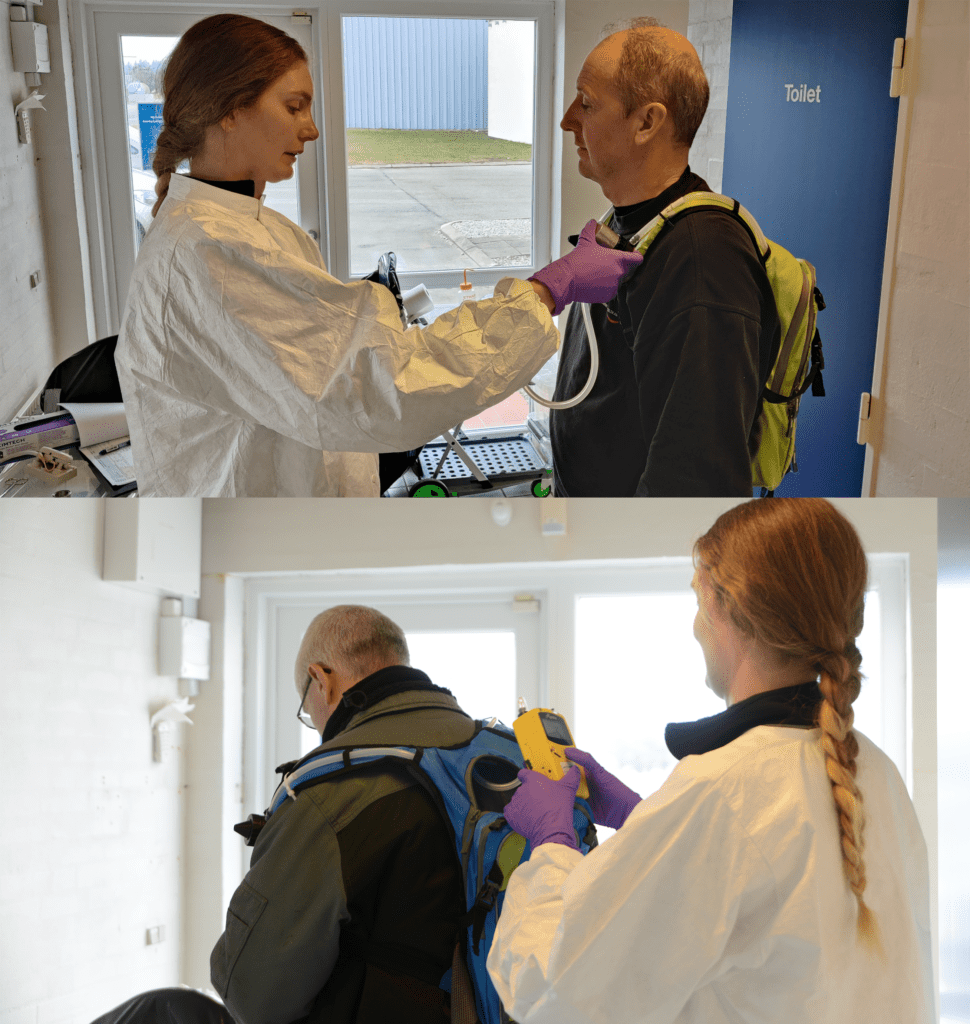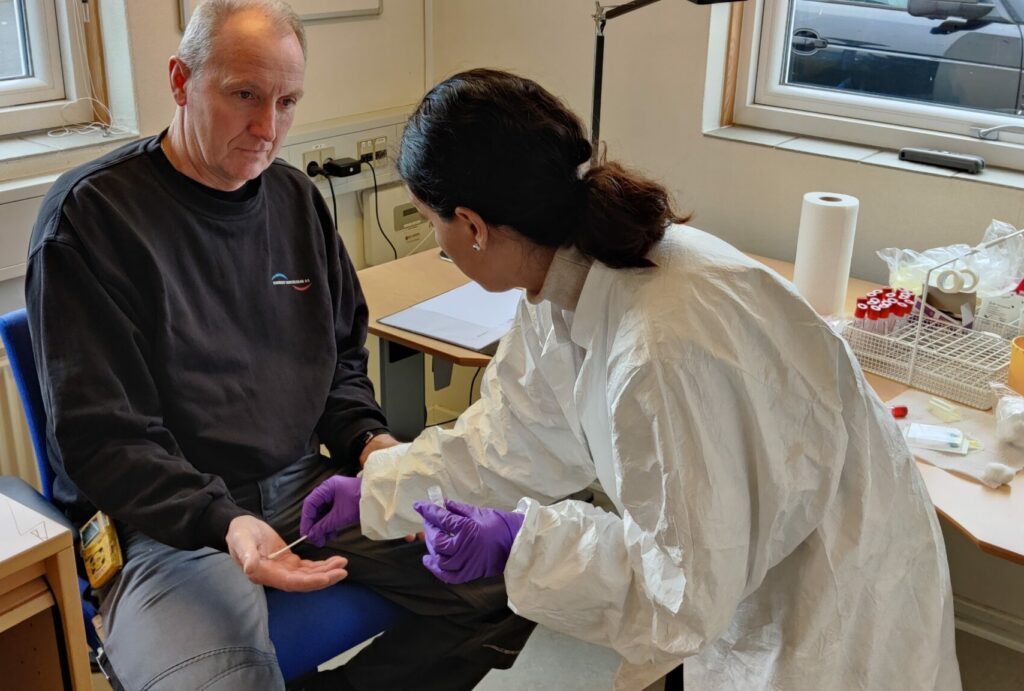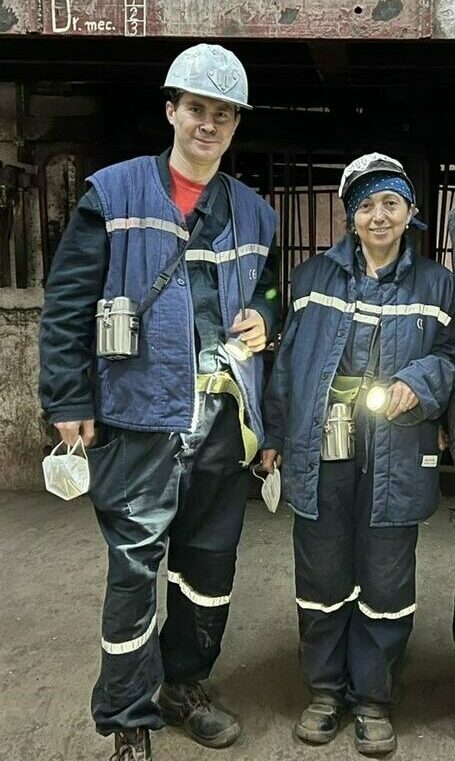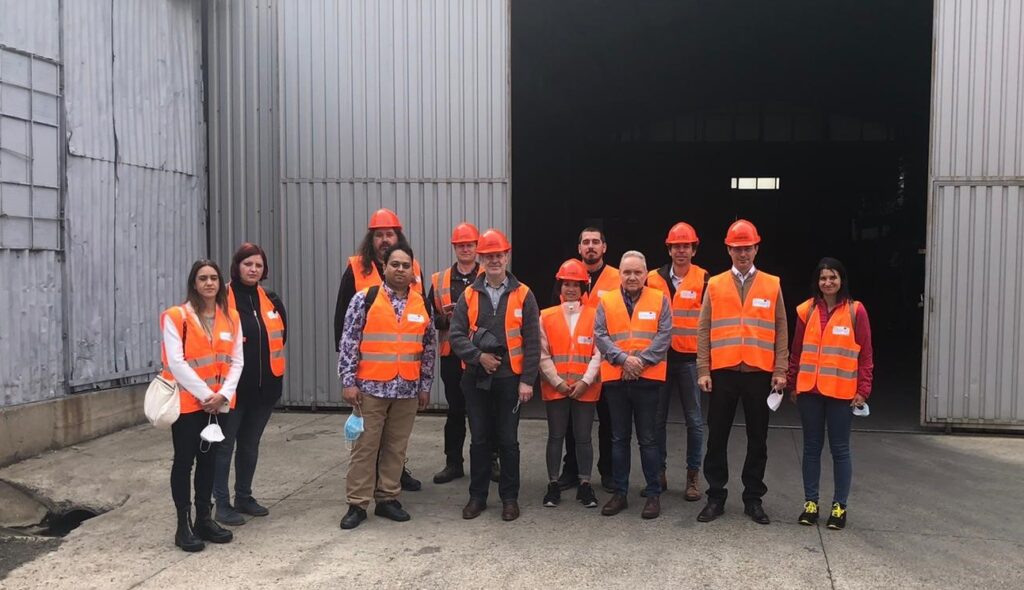Mapping Exposure-Induced Immune Effects: Connecting the Exposome and the Immunome
EXIMIOUS Newsletter 02 | October 2022
The waste worker cohort | A group of workers with a diverse exposure
One of the occupational cohorts studied within the EXIMIOUS project is the waste worker cohort. The focus in the waste worker cohort is the exposure and health of waste workers and wastewater treatment plant workers in Denmark. The cohort includes workers with various tasks, like collecting waste, handling waste post-collection, producing energy from waste, and maintaining wastewater treatment plants, in addition to sludge workers. Previous studies have shown that work with waste and wastewater can be associated with health effects on the airways [1, 2].
Waste workers
To protect the environment and human health and to move towards a circular economy, the European Union requires that member states maximise recycling. In some countries, this has been associated with more waste-sorting at the household level or post-collection. It has also been linked to a reduced waste collection frequency [1, 3]. Furthermore, waste that was previously in plastic bags as part of the residual waste, e.g., cans and plastic containers, is now placed directly in waste containers for recycling. This may cause waste workers to be more directly exposed to waste particles and to higher levels of microorganisms.
Waste collection workers are exposed to elevated levels of microorganisms and bacterial endotoxin (a highly inflammogenic substance found in a group of bacteria) compared to typical outdoor levels, and the exposure consists of a high diversity of fungal and bacterial species [1, 4].


Due to the wide-ranging nature of waste, e.g., barbecue ash, kitchen waste and electronic waste, we expect that the workers’ exposure is diverse. In addition to microorganisms, it may also include different chemicals and combustion particles, which may all affect their health. Wastewater and sludge workers were also selected for this study as they run the additional risk of being exposed to human pathogens, bacterial endotoxins [2, 5] and chemicals from the wastewater, which may together affect the workers’ health.
Exposure and blood samples
The microbiology group at the National Research Centre for the Working Environment (NRCWE) in Denmark invites workers to participate in the study and informs them about the aim of the study, ethics, and their rights. We measure exposure during whole workdays using personal samplers (Fig. 1) and collect blood samples at the end of the workday (Fig. 2). If possible, we sample twice and take blood samples twice for each participant. The blood samples are then sent to KU Leuven, where different subsets of immune cells in the blood are analysed to assess each individual’s immune system.
The participation rate is satisfactory as we have already collected samples from 50 of the 100 planned participants. However, due to the transportation time from the workplace to the laboratory and the time requirements for the quick processing of blood samples, only companies close to NRCWE can participate in EXIMIOUS. This unfortunately excluded some companies from participating with blood samples.
Questionnaires on potential exposure
To help build a more comprehensive picture of the workers’ exposure situation and their perception of it, all the participating workers receive the electronic EXIMIOUS questionnaire, which includes questions about their health and potential exposure in their homes. They also receive additional questions about their exposure at work, time spent on work tasks, and questions about health which may be related to exposure.
References:
- Madsen, A.M., et al., Review of biological risks associated with the collection of municipal wastes. Science of The Total Environment, 2021: p. 148287.
- Cyprowski, M., et al., Endotoxin exposure and changes in short-term pulmonary function among sewage workers. International Journal of Occupational Medicine and Environmental Health, 2015. 28.
- Madsen, A.M., et al., Expanded cardboard waste sorting and occupational exposure to microbial species. Waste Manag, 2019. 87: p. 345-356.
- Rasmussen, P.U., et al., A characterization of bioaerosols in biowaste pretreatment plants in relation to occupational health. Waste Manag, 2021. 131: p. 237-248.
- Uhrbrand, K., et al., Assessment of airborne bacteria and noroviruses in air emission from a new highly-advanced hospital wastewater treatment plant. Water Research, 2017. 112: p. 110-119.
Occupational cohort exposed to mineral dust and organic solvents | Does working in a mine, shoe factory, or metallurgical plant affect your immune system?
Through its occupational cohorts, EXIMIOUS aims to shed light on the link between work-related exposure factors (as part of environmental factors) and immune-mediated disease. With the aim of understanding how occupational exposure to mineral dust and organic solvents can influence the immune system, researchers from George Emil Palade University of Medicine, Pharmacy, Science, and Technology of Targu Mures (UMFST) in Romania manage a cohort of workers with such exposures. This cohort includes mine workers, exposed mainly to mineral dust (silica and coal dust), workers in the shoe, wood, and painting industries who are mainly exposed to organic solvents, and workers from a metallurgical plant who are exposed to both mineral dust (silica and metal particles) and organic solvents.
Glossary:
Mineral dust: atmospheric aerosol originated from the suspension of minerals constituting the soil, in this case soil from the selected mines.
Organic solvents: carbon-based substances capable of dissolving or dispersing one or more other substances
Spirometry: common test to evaluate lung function (breathing). The test measures the amount and speed of air you inhale and exhale and it is used to identify pulmonary conditions.
DLCO: diffusing capacity of the lungs for carbon monoxide, a non-invasive test that evaluates the capacity of the lungs to transfer gas from the inspired air to the red blood cells.
Biomarker: a defined characteristic that is measured as an indicator of normal biological processes, pathogenic processes or responses to an exposure or intervention.
Assessing health status and exposure levels
All workers within the cohort are recruited in Romania and they are matched to a control group (office workers), also recruited in Romania. Both the group of exposed workers and the control group will be assessed using the following methods: 1) direct measurements of working hazards and exposure levels at work, 2) a clinical examination for a complete diagnosis of their current health status, and 3) the collection of biological samples of urine and blood.
The direct measurements of the exposure levels at work will be performed by the EXIMIOUS partner BeCOH, with the support of the UMFST team. They will use questionnaires and Job-Exposure-Matrixes to identify, quantify, and model the occupational exposure.
The clinical examination will take place once per cohort participant, with the purpose of assessing whether the study participant is a healthy individual or suffers from a chronic disease, including autoimmune diseases. The examination will be performed by occupational physicians at UMFST and includes functional tests, such as ECG (electrocardiogram), lung function tests (spirometry, DLCO), chest X-ray (in selected cases), and allergy tests (prick test, patch test). If, during the medical evaluation of the worker, the physician has a suspicion of chronic or acute diseases related to or influenced by workplace exposures, additional testing will be done, and the workers will be referred to the appropriate medical facility.
Biological samples of blood and urine will also be collected from all participants during work hours. Hematology, immunologic, and biochemical blood tests will be conducted in the UMFST research lab to provide a clear and accurate view of the health status of the workers. Further analyses of these samples will be conducted by KUL and NIPH to identify specific immune signatures or biomarkers related to exposure-associated disease.

Current progress
So far, we have recruited workers exposed to mineral dust (silica and metal particles) as well as office workers as part of the control group. For these two subgroups, workplace assessments have been done together with our colleagues from BeCOH and KUL (Fig. 1 and 2). All participants recruited so far have filled in questionnaires about their health and exposure at work. Furthermore, blood and urine samples have been collected from all participants, part of which have already been subjected to common blood tests in UMFST’s research facility.
